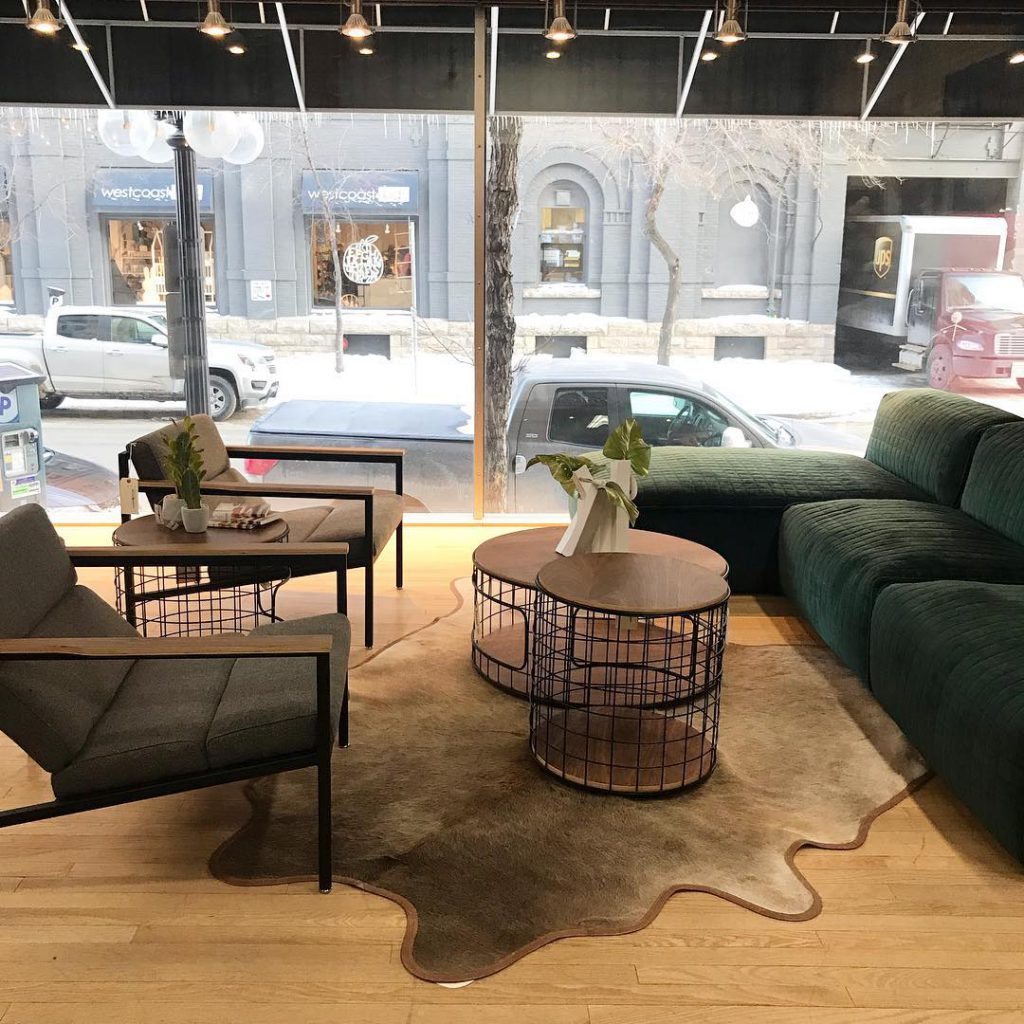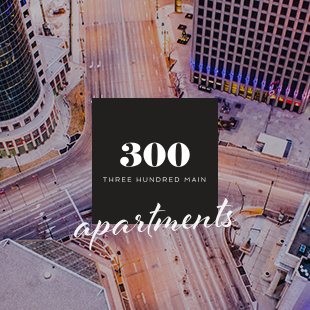After spending two years studying, working, and falling in love in Scotland, in October I moved into a one-bedroom suite in the Boyce Lofts in the Exchange District. It was the first time I didn’t have to live with roommates, and the first time I didn’t have to move into a furnished apartment. The Boyce Lofts were brand new and no one had lived in the space before me. It was a blank canvas (and not just because of the white walls and white cabinetry), and I was so excited to decorate and furnish it just the way I wanted.
But while my apartment has high ceilings and an open concept, it’s pretty small—at around 500 square feet—and narrow enough that I can’t fit furniture on both sides of the living/dining room. So not only did I have to plan out the use of space, but I had to make sure I wasn’t filling the space with too much. I knew my already-small space would feel even smaller with clutter and large furniture. I had to be smart about decorating.
I’m no design expert, but I like to think I have good taste, and I strongly believe that minimalism is the way forward. Not only does minimalism help reduce consumerism, but it helps you feel unburdened in the place that should matter most—home. So here are some tips on designing your small space.
Storage
When you have less space to leave things lying around, you can’t afford to have much clutter! Even if you’re not a messy person, it’s hard to keep things clean and tidy if you simply have too much stuff. It’s easy to accumulate Christmas and birthday gifts you didn’t really want, impulse buys you could’ve done without, and clothing and shoes.
At the same time, I understand that sometimes you just don’t want to be looking at your things, especially if it’s miscellaneous stuff you’re unsure where to store. Small-space living is your chance to get creative!
Before you move into your small space, purge your belongings. Donate or sell them things you don’t want or need (Siloam Mission gratefully accepts new and gently used clothing!). Not only will you feel unburdened from all these nonessential objects, but your small space will feel bigger and you’ll have more room to work with.
For storing your belongings, opt for open shelving. Closed shelving gives the illusion that your walls are closing in and that the room is even smaller. I have an abundance of kitchen cabinet space, so I use it to store some non-kitchen related items as well.
Under the bed is a great place to store items you don’t use very often. You can buy long, slim boxes exactly for this purpose, or you can even get a storage bed that has built-in storage under the mattress.
If your building has storage lockers, use yours! They’re handy for storing larger items like suitcases, bicycles, and seasonal clothing. Items that are essential, but seasonal, and too clunky to be keeping in your apartment year-long.
Furniture
When choosing furniture for your small space, look for pieces that are light and don’t take up a lot of space, or that give the illusion that they don’t. Avoid big, clunky, overstuffed furniture, and choose pieces that are low to the ground and have exposed legs.
Go for sleek armless chairs, and try transparent coffee tables, which won’t look like they’re taking any room at all. Think about using two small coffee tables instead of one big one that takes up a lot of space.

Dual or multipurpose pieces are key in a small space. Consider getting an ottoman instead of a coffee table so it can do double duty as extra seating. (Bonus points if it has built-in storage!) Floor cushions also make great emergency seating for when you have guests over, and you can stack them up when you’re not using them.
Look into getting an expandable or folding dining table. Keep it small when you’re alone and open it up to fit all your friends around the table the next time you’re hosting brunch.
For storing things like books and records, opt for a shelving unit that is vertical, not horizontal. You’ll be able to store more items while taking up less floor space. If you can, install floating shelves to avoid using up precious square footage. They’re sleek, easy to set up, and you can arrange them however you like.
A TV media console can take up a lot of space, so mount your television on the wall to minimize the use of floor space. I took it a step further and got a projector—they’re cheaper, much smaller, easily transportable, and a great alternative to a clunky television if you have white walls.
Decoration
Plants are the easiest way to decorate and brighten up your space. If you have a history of being bad at keeping plants alive (guilty as charged!), try a cactus or a bonsai; they’re small, cute, and can withstand being over or under watered. Stop by Verde Plant Design for a great selection!
Don’t be afraid to decorate your walls with art that you love. Mirrors make a space look larger, so go on the hunt for a mirror with a stylish frame. A stylish mirror can function as part of your decor, not just something you check to make sure you look good before heading out the door.
Hang your curtains from the ceiling, not at the top of the window frame—it’ll create the illusion of higher ceilings and a larger space.
When it comes to creating a colour palette for a small space, use colour sparingly. Use light colours for your walls and furniture, and dark or bold colours as accents only, such as throw pillows, vases, or lamps. Try to create a colour palette that uses only two to three colours.
Getting Started
Where do you spend the most time? Focus your spending on that area to get the most out of your budget. If you like sleeping, invest in a bed you can’t wait to crawl into; if you like watching TV, invest in a cozy sofa; if you work from home, invest in a good working space, with a comfy chair and a nice desk. Make a plan, and don’t buy everything at once. Get the important things like your bed and your sofa first, live with it for a bit, and feel out what you need to get next; you might surprise yourself!
Any tips for decorating a small space? Share them below!




